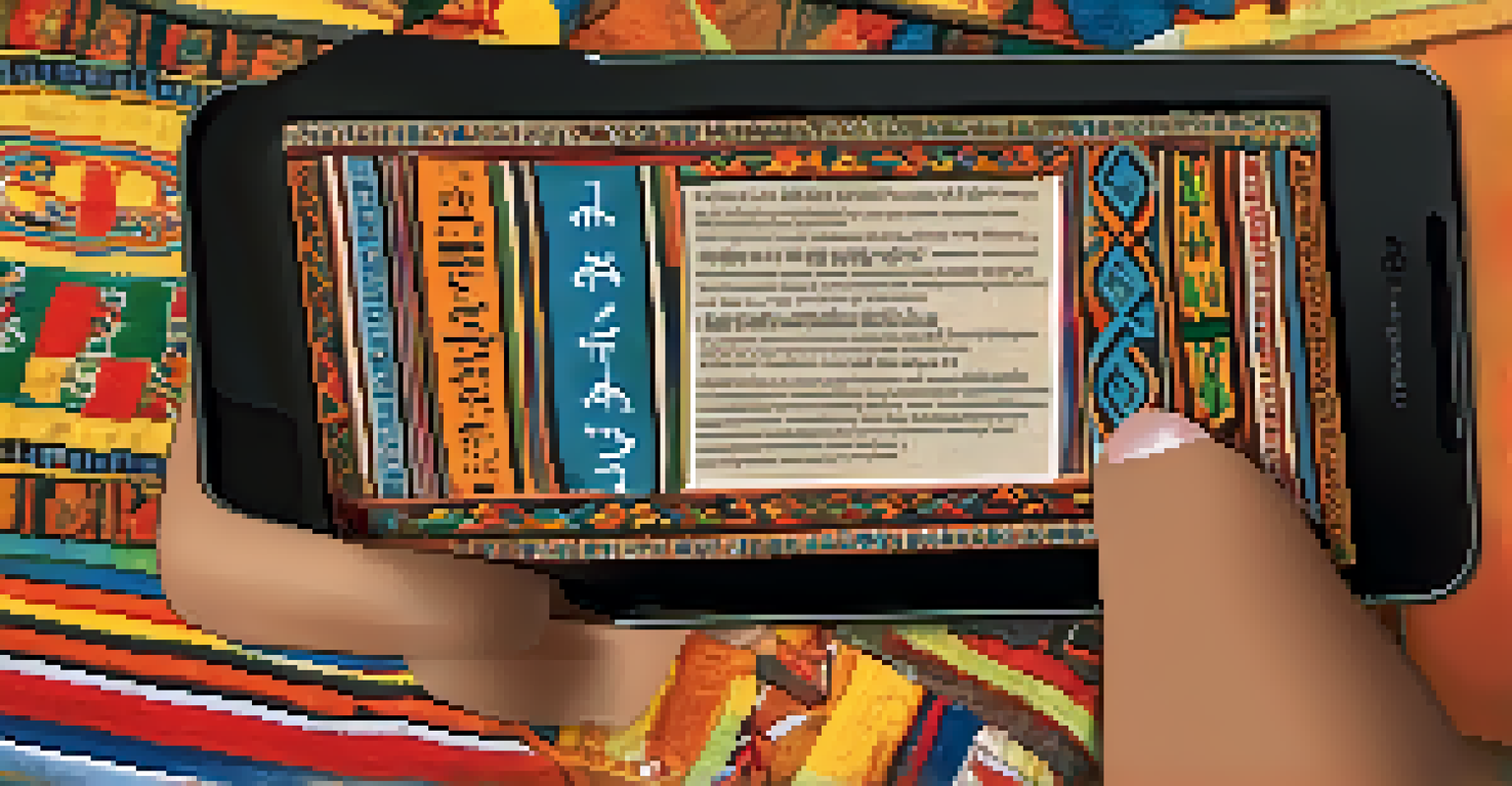Reviving Indigenous Languages: Successful Initiatives in Peru

The Importance of Indigenous Languages in Peru
Indigenous languages are not just means of communication; they are vital to cultural identity and heritage. In Peru, over 47 Indigenous languages are spoken, each carrying unique histories and traditions. Losing these languages can mean losing entire ways of life, making their revival crucial for future generations.
A language is something infinitely greater than grammar and philology. It is a poetic testament to the genius of a race and the culture of a nation.
Languages encapsulate worldviews, and for many Indigenous communities, language is intertwined with their connection to the land and their ancestors. Thus, preserving these languages is essential not only for cultural diversity but also for the ecological knowledge embedded within them.
Moreover, the revitalization of Indigenous languages can foster community cohesion and pride. When people speak their native tongues, it strengthens their bond with their heritage and promotes a sense of belonging within the community.
Community-Led Language Revitalization Programs
One successful approach to language revival in Peru is community-led initiatives. These programs empower local communities to take charge of their language preservation efforts, ensuring that the initiatives are culturally relevant and rooted in the community's needs. For example, the Quechua-speaking community of Cusco has implemented workshops to teach children their native language.

These grassroots efforts often involve elders passing down language skills to younger generations, creating a natural transmission of knowledge. Storytelling, songs, and traditional practices are incorporated into lessons, making the learning experience engaging and meaningful.
Cultural Identity Through Language
Indigenous languages in Peru are crucial for preserving cultural identity and heritage.
Furthermore, these programs also raise awareness about the importance of Indigenous languages among the wider population, fostering respect and appreciation for linguistic diversity. By involving the entire community, these initiatives help create a supportive environment for language learning.
Educational Reforms Supporting Indigenous Languages
In recent years, Peru has made strides in integrating Indigenous languages into the national education system. Recognizing the importance of bilingual education, the government has developed curricula that include Indigenous languages alongside Spanish. This move not only promotes language learning but also validates Indigenous cultures within the educational framework.
Language is the road map of a culture. It tells you where its people come from and where they are going.
Schools in regions with significant Indigenous populations now offer classes taught in native languages, allowing students to learn in a familiar linguistic context. This approach has been shown to improve academic performance and self-esteem among Indigenous students, who often feel marginalized in traditional educational settings.
Additionally, training programs for teachers equip them with the skills needed to effectively teach in both languages. By addressing the language barrier in education, Peru is fostering a more inclusive society that values the contributions of Indigenous cultures.
Use of Technology in Language Preservation
Technology plays a pivotal role in the revitalization of Indigenous languages in Peru. Mobile apps, online resources, and social media platforms are being utilized to teach and promote these languages, making them accessible to a broader audience. For instance, apps that offer language lessons in Quechua or Aymara are gaining popularity among younger generations.
These digital tools not only provide a fun and engaging way to learn but also connect speakers and learners across distances. Online communities can share resources, stories, and experiences, creating a supportive network for language enthusiasts.
Community-Led Revitalization Efforts
Grassroots initiatives empower local communities to preserve their languages through engaging educational programs.
Moreover, technology enables the documentation of Indigenous languages, preserving them for future generations. Audio and video recordings of native speakers can be archived, ensuring that even if a community loses active speakers, the language can still be revived through these resources.
Cultural Events and Festivals Celebrating Indigenous Languages
Cultural events and festivals are powerful platforms for promoting Indigenous languages in Peru. These gatherings celebrate the rich traditions and histories associated with various languages, providing opportunities for speakers to showcase their linguistic heritage. Events like the Festival of Indigenous Languages bring together communities to share stories, music, and art in their native tongues.
Such festivals not only raise awareness but also instill pride in Indigenous identities. Participants, especially younger generations, are encouraged to use their languages publicly, reinforcing their value in everyday life. This visibility can spark interest in language learning among those outside the community as well.
Additionally, these events often feature workshops and discussions on language preservation, highlighting successful initiatives and encouraging collaboration among different communities. By fostering a sense of unity and purpose, they play a crucial role in the ongoing efforts to revitalize Indigenous languages.
Challenges in Reviving Indigenous Languages
Despite the positive initiatives, challenges remain in the revival of Indigenous languages in Peru. One significant hurdle is the historical stigma associated with Indigenous languages, often viewed as inferior to Spanish. This mindset can discourage speakers from using their native languages in public or formal settings.
Moreover, the effects of globalization pose a threat to language maintenance, as younger generations may prefer dominant languages like Spanish or English for economic opportunities. This shift can lead to language attrition, with fewer people speaking their Indigenous languages fluently.
Education and Technology Integration
Peru's educational reforms and technology use are key to supporting Indigenous language revival and accessibility.
Addressing these challenges requires a multi-faceted approach that includes education, community engagement, and policy support. By combating stigma and promoting the practical benefits of multilingualism, efforts to revive Indigenous languages can be strengthened.
The Future of Indigenous Languages in Peru
The future of Indigenous languages in Peru holds promise, thanks to the dedication of communities and supportive policies. As more people recognize the value of linguistic diversity, there is growing momentum for initiatives aimed at language revival. With continued investment in education and technology, the landscape for Indigenous languages is gradually improving.
Moreover, intergenerational transmission of language—where parents and elders actively teach their languages to children—plays a crucial role in ensuring the survival of these languages. Community pride and cultural identity will drive these efforts forward, creating a sustainable environment for language learning.

Ultimately, a collective commitment to preserving Indigenous languages can lead to richer cultural landscapes and a deeper understanding of Peru’s diverse heritage. As these languages thrive, they will continue to inspire future generations, reinforcing their significance in the tapestry of human expression.